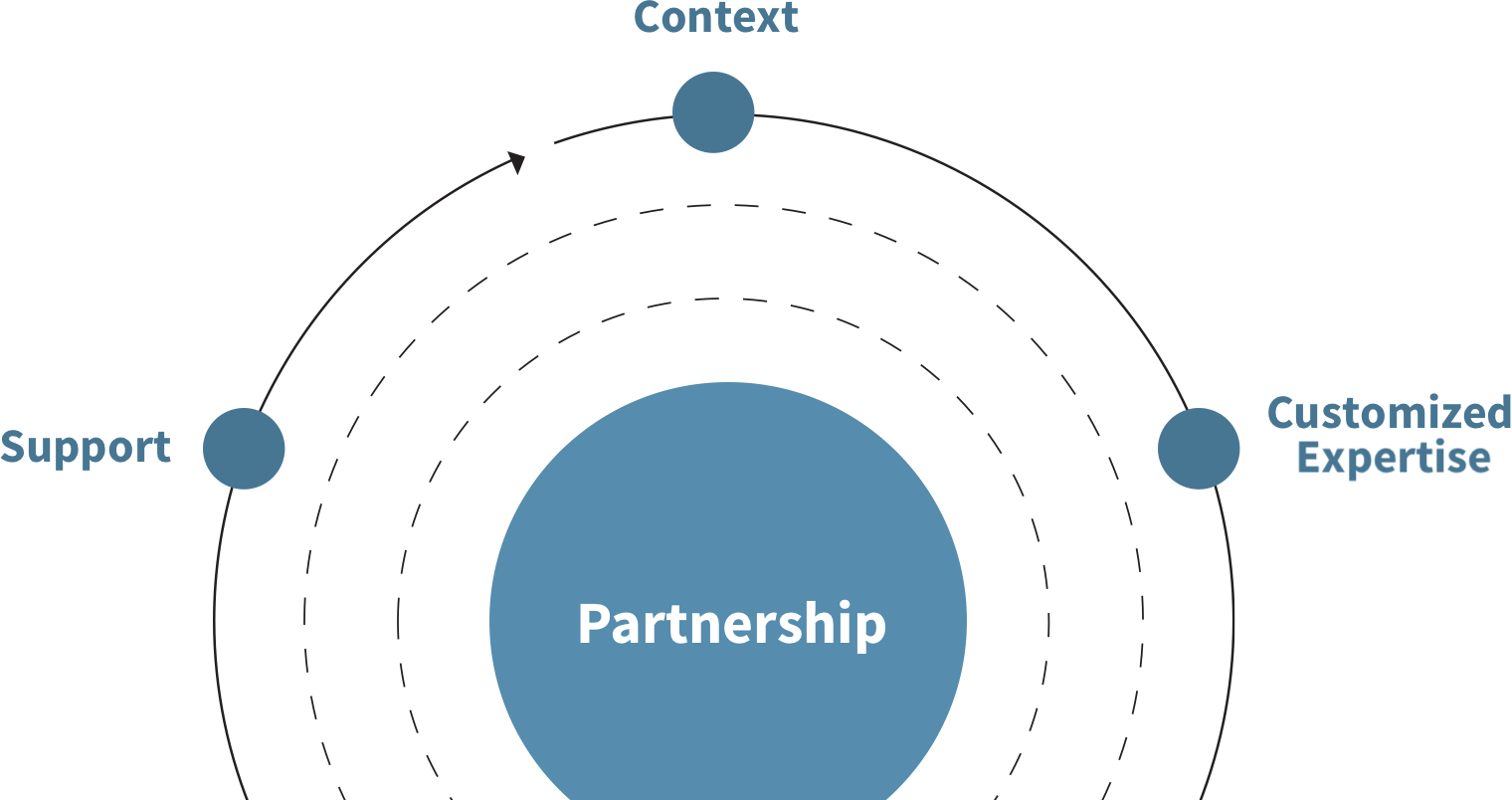The Nebo Approach
Our work begins with a conversation. Your results come from strategic partnership.
We pay attention to where you want to go and why, then design a customized approach to help get you there. After learning about your priorities, goals and aspirations, we connect you with the right Nebo services, people and resources. We model partnership, collaboration, teamwork and innovation as hallmarks of our approach.

Deliver on your mission through the talent of your people.
Nebo serves organizations by working at the confluence of organizational strategy, leadership and culture. We help you align your people with your most critical organizational goals, creating the conditions for transformational change. When you invest strategically in your people, results follow.

We have the right match for you.
Nebo brings together the most talented coaches, thoughtfully selected resources and creative strategies to guide your journey of self-discovery, applied learning and growth. From one-on-one leadership coaching to insightful feedback assessments to private leadership retreats, we help you to clarify your goals and make your vision real.
Our Services
Coaching & Leadership Development
Your people are your most valuable resource. How do you develop leadership within your organization?
Learn MoreOrganizational Resiliency
& Culture
Culture impacts all aspects of organizational life. How do you develop leadership within your organization?
Learn MoreStrategic Vision & Planning
Envisioning the Future is the defining act of leadership. Can you see your future?
Learn MoreJohn Racanelli
President & Chief Executive Officer, National Aquarium
Working with my expert coach at Nebo is productive, insightful and incredibly rewarding. Our sessions invariably lead me to fresh perspectives and innovative solutions. On a personal level, our work together has helped me develop greater self-awareness and a better attitude. The value I receive from my time with my Nebo coach is frankly incalculable.
Stacy Critzer
CHRO, Unanet
The Nebo team spent time learning about our business and our leadership needs. They designed programs that fit beautifully into our culture and environment. Our leaders not only improved their own personal leadership skills, but they also learned how to work more cohesively as a leadership team.
Don Smith
Chief Talent & Inclusion Officer, Crowell & Moring, LLC
Nebo knows us. Through coaching services and other leadership programs, Nebo has collaborated very effectively with us to provide fresh ideas about what our people need to succeed. As a result, we've taken a closer look at how we are developing talent and how we can remove barriers for people.
Joshua Powell
CEO, Development Gateway
I've worked with Nebo for years as I evolved from an individual contributor to organizational leader. Nebo's coaching was instrumental in learning how to find and refine my management skills and leadership style.
Rebecca Schmale
Vice President, Culture, Organizational Development, Learning, Allina Health
Our HR and executive teams are thrilled with the way we are working with Nebo. Our leaders are learning to embrace coaching as a significant opportunity for personal and professional growth. Nebo helped us frame coaching in a way that is opening the door for our leaders to make the most of the coaching investment. Thank you for your partnership!
Nebo Wrote the Book on Facilitation
#1 New Release
Holding Space: A Guide to Mindful Facilitation
by Kate Ebner and Izzy Martens
The work of skilled facilitators has never been more necessary or important. Opening up the space for dialogue for all is needed now, more than ever. Holding Space: A Guide to Mindful Facilitation is a starting point, intended to make it easier for coaches, facilitators, and leaders to step forward with confidence. Authors Kate Ebner, CEO of The Nebo Company and her colleague Izzy Martens, a certified facilitator, writer and yoga teacher, share stories, lessons, strategies for facilitating important conversations and gatherings.
Holding Space begins with the insight that becoming a great facilitator requires a willingness to look within, including an examination of one’s own beliefs and biases, presence, unique traits and trigger points. Discover how to tap into the practice of mindfulness to “hold space” for others and create extraordinary —even transformational– experiences and outcomes.
Thought Leadership
Take a look at the most recent articles and insights from the team at Nebo.
Leading from Your Back Foot
For many years, we’ve coached leaders on how to shift from reactive to purposeful. Often, we’ve…
Sensemaking in a Time of Emergence With Dr. Deborah Ancona
The world is rapidly changing around us. As we move into the second quarter of 2025, sensemaking is…
Creating a Culture of Feedback in Law Firms: Why Hard Conversations Can’t Wait
Attorneys are highly trained in several important ways: strong advocates, persuasive speakers, and…


